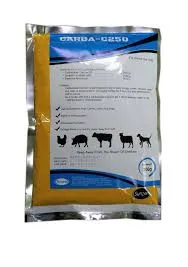- Afrikaans
- Albanian
- Amharic
- Arabic
- Armenian
- Azerbaijani
- Basque
- Belarusian
- Bengali
- Bosnian
- Bulgarian
- Catalan
- Cebuano
- Corsican
- Croatian
- Czech
- Danish
- Dutch
- English
- Esperanto
- Estonian
- Finnish
- French
- Frisian
- Galician
- Georgian
- German
- Greek
- Gujarati
- Haitian Creole
- hausa
- hawaiian
- Hebrew
- Hindi
- Miao
- Hungarian
- Icelandic
- igbo
- Indonesian
- irish
- Italian
- Japanese
- Javanese
- Kannada
- kazakh
- Khmer
- Rwandese
- Korean
- Kurdish
- Kyrgyz
- Lao
- Latin
- Latvian
- Lithuanian
- Luxembourgish
- Macedonian
- Malgashi
- Malay
- Malayalam
- Maltese
- Maori
- Marathi
- Mongolian
- Myanmar
- Nepali
- Norwegian
- Norwegian
- Occitan
- Pashto
- Persian
- Polish
- Portuguese
- Punjabi
- Romanian
- Russian
- Samoan
- Scottish Gaelic
- Serbian
- Sesotho
- Shona
- Sindhi
- Sinhala
- Slovak
- Slovenian
- Somali
- Spanish
- Sundanese
- Swahili
- Swedish
- Tagalog
- Tajik
- Tamil
- Tatar
- Telugu
- Thai
- Turkish
- Turkmen
- Ukrainian
- Urdu
- Uighur
- Uzbek
- Vietnamese
- Welsh
- Bantu
- Yiddish
- Yoruba
- Zulu
നവം . 12, 2024 10:03 Back to list
oxfendazole with oxyclozanide veterinary oral suspension
The Use of Oxfendazole with Oxyclozanide in Veterinary Oral Suspension
Veterinary medicine is a vital field aimed at ensuring the health and well-being of animals. Within this domain, the development of effective anthelmintic treatments is crucial for managing parasitic infections in livestock and pets. One such advancement is the formulation of veterinary oral suspensions containing oxfendazole and oxyclozanide. This combination has garnered attention for its efficacy in treating various parasitic infections, especially in ruminants and equines.
Understanding Oxfendazole and Oxyclozanide
Oxfendazole, a member of the benzimidazole class of anthelmintics, is well-known for its efficacy in controlling gastrointestinal nematodes and some cestodes. It operates by inhibiting the formation of microtubules within the parasitic cells, leading to cell death and ultimately the elimination of the parasite. Oxfendazole is particularly favored for its broad-spectrum activity, low toxicity to the host, and favorable pharmacokinetics, allowing for effective treatment with minimal dosing frequency.
On the other hand, oxyclozanide is a flukicide used primarily to control liver and gastrointestinal flukes in livestock. It interrupts the energy metabolism of trematodes, leading to their paralysis and death. The addition of oxyclozanide to oxfendazole in an oral suspension provides a comprehensive approach to treating mixed parasitic infections, as animals often harbor multiple types of parasites simultaneously.
The Synergistic Effect
The combination of oxfendazole and oxyclozanide in an oral suspension offers veterinarians a powerful tool to combat parasitism. This synergistic effect enhances the overall efficacy of treatment protocols. By addressing both nematodes and trematodes, this formulation ensures that a wider range of parasites is targeted, minimizing the risk of treatment failure due to resistance or overlooked infections.
Studies have shown that the co-administration of these two agents can lead to improved outcomes in terms of parasite reduction in livestock
. Moreover, the convenience of an oral suspension formulation makes it easy for veterinarians to administer the medication, particularly in large animals, where injections may be less feasible or more stressful.oxfendazole with oxyclozanide veterinary oral suspension

Safety and Efficacy
One of the foremost considerations in veterinary pharmacology is the safety profile of medications used. Both oxfendazole and oxyclozanide have established safety records, with low incidences of adverse effects when administered according to standard veterinary guidelines. This safety is paramount, as livestock are valued not only for their productivity but also for their welfare.
Clinical studies have demonstrated that the oral suspension achieves effective plasma levels of both drugs, ensuring therapeutic concentrations while minimizing the risk of toxicity. Regular monitoring and adherence to recommended dosages can help optimize treatment outcomes and reduce the potential for resistance development.
Practical Applications
The oxfendazole and oxyclozanide oral suspension is particularly useful in the management of parasitic infections in grazing animals, where exposure to parasites is high. Cattle, sheep, and goats benefit significantly from this formulation, especially during the grazing season when the risk of infection peaks. By implementing this treatment, veterinarians can help farmers maintain healthy herds, which is critical for productivity and economic viability.
Additionally, this formulation isn't just limited to livestock; it also has applications in equine medicine. Horses, which can suffer from various gastrointestinal parasites, can benefit from the dual-action treatment provided by this oral suspension.
Conclusion
In conclusion, the combination of oxfendazole and oxyclozanide in a veterinary oral suspension represents a significant advancement in the fight against parasitic infections in animals. Its broad-spectrum efficacy, safety profile, and ease of administration make it a valuable option for veterinarians. As we continue to face challenges from parasitic resistance, innovations like this are crucial in safeguarding animal health and, by extension, the economic stability of the agricultural sector. Through responsible usage and adherence to veterinary guidelines, the potential of this combination can be fully realized, ensuring healthier animals and a more sustainable approach to livestock management.
-
Guide to Oxytetracycline Injection
NewsMar.27,2025
-
Guide to Colistin Sulphate
NewsMar.27,2025
-
Gentamicin Sulfate: Uses, Price, And Key Information
NewsMar.27,2025
-
Enrofloxacin Injection: Uses, Price, And Supplier Information
NewsMar.27,2025
-
Dexamethasone Sodium Phosphate Injection: Uses, Price, And Key Information
NewsMar.27,2025
-
Albendazole Tablet: Uses, Dosage, Cost, And Key Information
NewsMar.27,2025













